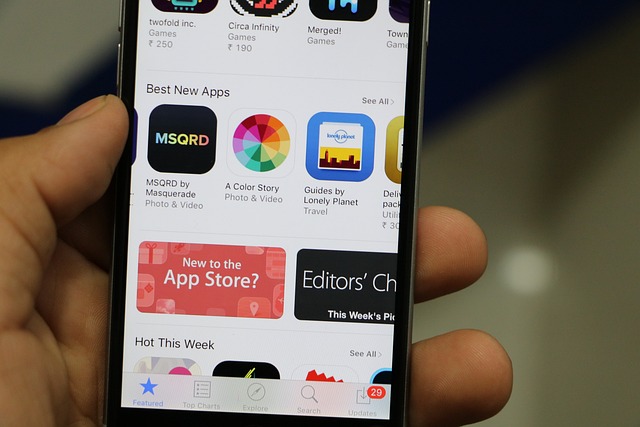Imagine you’ve just launched an amazing app. Users are flocking in, engagement is high, but there’s one tiny problem: you’re not making any money. Sound familiar? Don’t worry, you’re not alone. Monetizing an app can be a tricky business, but with the right strategies, you can turn that user activity into a steady revenue stream. So, let’s dive in and explore the world of app monetization together.
Understanding App Monetization
First things first, what exactly is app monetization? Simply put, it’s the process of generating revenue from your app. This could be through direct payments, advertising, in-app purchases, or other creative methods. The key is to find a strategy that not only brings in money but also keeps your users happy and engaged.
Why Monetize Your App?
You might be thinking, “Why should I monetize my app? Isn’t it enough to have a great product?” Well, let’s consider a few points:
- Sustainability: Developing and maintaining an app costs money. Monetization helps cover these costs and ensures your app can continue to grow and improve.
- Profitability: Beyond just covering costs, monetization can turn your app into a profitable business. Who doesn’t want to make a little extra cash, right?
- User Value: When done right, monetization can actually enhance the user experience by offering premium features or removing ads for a fee.
Popular App Monetization Strategies
Now that we’ve established why monetization is important, let’s look at some popular strategies. Remember, there’s no one-size-fits-all solution, so you might need to experiment with a few different methods to find what works best for your app.
In-App Advertising
One of the most common ways to monetize an app is through in-app advertising. This can take many forms, such as banner ads, interstitial ads, or rewarded video ads. The idea is simple: you display ads within your app, and you get paid based on impressions or clicks.
However, be careful not to overwhelm your users with too many ads. Nothing kills user engagement faster than a screen full of annoying pop-ups. The key is to find a balance where ads are noticeable but not intrusive.
In-App Purchases
In-app purchases allow users to buy additional content or features within your app. This could be anything from extra levels in a game to premium features in a productivity app. The beauty of in-app purchases is that they can provide a steady stream of revenue as users continue to engage with your app.
For example, consider the popular game “Clash of Clans.” Users can download the game for free, but they have the option to purchase gems to speed up progress or buy special items. This freemium model has proven incredibly successful, with the game generating millions in revenue.
Subscription Model
The subscription model involves charging users a recurring fee for access to your app or its premium features. This can be a great way to build a predictable revenue stream, especially if your app offers ongoing value.
Take Spotify, for instance. While users can listen to music for free with ads, a premium subscription removes ads and offers additional features like offline listening. This model has helped Spotify become one of the most successful music streaming services in the world.
Freemium Model
The freemium model combines the best of both worlds. Users can download and use your app for free, but they have the option to upgrade to a premium version with additional features. This model can be highly effective, as it allows users to try out your app before committing to a purchase.
A great example is the note-taking app Evernote. Users can use the basic version for free, but for advanced features like more storage and better organization tools, they need to upgrade to a premium plan.
Sponsorships and Partnerships
Another creative way to monetize your app is through sponsorships and partnerships. This involves collaborating with other brands or companies to promote their products or services within your app. In return, you receive a fee or a share of the revenue generated.
For instance, a fitness app might partner with a sports equipment brand to offer exclusive discounts or promotions to its users. This not only generates revenue but also adds value for the users.
Choosing the Right Monetization Strategy
With so many options available, how do you choose the right monetization strategy for your app? Here are a few factors to consider:
User Base
Understanding your user base is crucial. Who are your users, and what are they willing to pay for? For example, if your app targets a younger audience, in-app purchases for virtual goods might be more effective. On the other hand, if your app is aimed at professionals, a subscription model for premium features might be the way to go.
App Category
The category of your app can also influence your monetization strategy. Games often rely on in-app purchases and advertising, while productivity apps might benefit more from a subscription model. Consider what works best for your specific niche.
User Engagement
How engaged are your users? If your app has high user engagement, you might be able to charge a premium for advanced features. However, if engagement is low, you might need to focus on improving the user experience before implementing a monetization strategy.
Case Studies: Successful App Monetization
Let’s look at some real-life examples of apps that have successfully monetized their user activity.
Candy Crush Saga
Candy Crush Saga is a classic example of a game that has mastered the art of in-app purchases. The game is free to download, but users can purchase additional lives, boosters, and other items to enhance their gaming experience. This freemium model has helped Candy Crush become one of the highest-grossing mobile games of all time.
Headspace
Headspace, a meditation and mindfulness app, uses a subscription model to generate revenue. Users can access basic features for free, but for a more comprehensive experience, they need to subscribe to a premium plan. This model has been incredibly successful, with Headspace generating millions in revenue and helping users improve their mental well-being.
Duolingo
Duolingo, a language-learning app, combines advertising and a freemium model to monetize its user base. Users can learn languages for free with ads, or they can upgrade to a premium plan to remove ads and access additional features. This dual approach has helped Duolingo become one of the most popular language-learning apps in the world.
Tips for Successful App Monetization
Now that we’ve covered the basics, let’s dive into some tips to help you successfully monetize your app.
Focus on User Experience
No matter which monetization strategy you choose, always prioritize the user experience. Happy users are more likely to engage with your app and make purchases. Make sure your monetization efforts don’t disrupt the user experience or frustrate your users.
Test and Iterate
Don’t be afraid to experiment with different monetization strategies. What works for one app might not work for another, so it’s important to test and iterate. Use analytics to track user behavior and revenue, and make adjustments as needed.
Offer Value
Users are more likely to pay for something if they see value in it. Whether it’s a premium feature, an ad-free experience, or exclusive content, make sure your monetization strategy offers real value to your users.
Be Transparent
Transparency is key when it comes to monetization. Be upfront about your monetization strategy and what users can expect. Hidden fees or unexpected charges can quickly turn users away and damage your app’s reputation.
Common Pitfalls to Avoid
While monetizing your app can be highly rewarding, there are some common pitfalls to avoid.
Over-Monetization
One of the biggest mistakes you can make is over-monetizing your app. Too many ads, excessive in-app purchases, or high subscription fees can quickly frustrate users and drive them away. Find a balance that works for both you and your users.
Ignoring User Feedback
User feedback is invaluable when it comes to monetization. Ignoring user feedback can lead to a disconnect between what you think users want and what they actually need. Listen to your users and make adjustments based on their feedback.
Neglecting Analytics
Analytics are crucial for understanding how your monetization strategy is performing. Neglecting analytics can lead to missed opportunities and poor decision-making. Use analytics to track user behavior, revenue, and other key metrics.
Conclusion
Monetizing your app can be a challenging but rewarding journey. By understanding your users, choosing the right strategy, and focusing on the user experience, you can turn your app into a profitable business. Remember, there’s no one-size-fits-all solution, so don’t be afraid to experiment and iterate.
So, what are you waiting for? Start exploring the world of app monetization and watch your revenue grow!
FAQs
What is app monetization?
App monetization is the process of generating revenue from your app through various strategies such as in-app advertising, in-app purchases, subscriptions, and more.
Why is app monetization important?
App monetization is important for sustaining and growing your app. It helps cover development and maintenance costs and can turn your app into a profitable business.
What are some popular app monetization strategies?
Popular app monetization strategies include in-app advertising, in-app purchases, subscription models, freemium models, and sponsorships.
How do I choose the right monetization strategy for my app?
Choosing the right monetization strategy depends on your user base, app category, and user engagement. Consider what works best for your specific niche and experiment with different strategies.
What are some common pitfalls to avoid in app monetization?
Common pitfalls to avoid include over-monetization, ignoring user feedback, and neglecting analytics. Always prioritize the user experience and be transparent about your monetization strategy.

